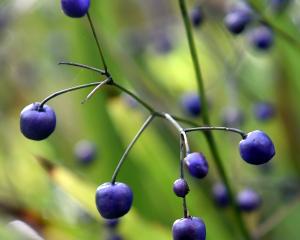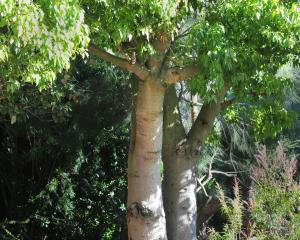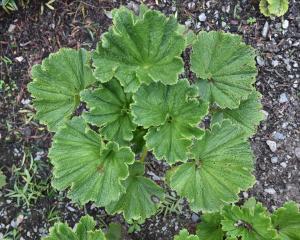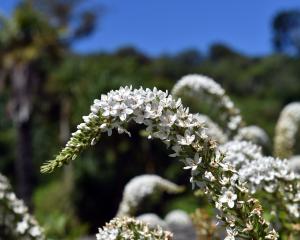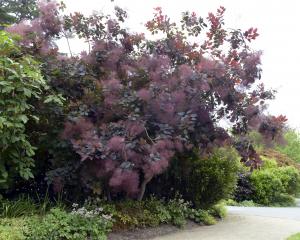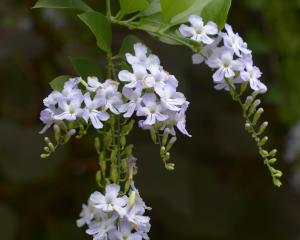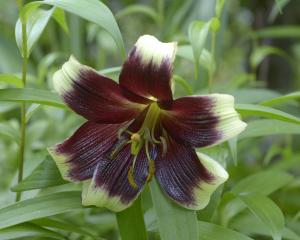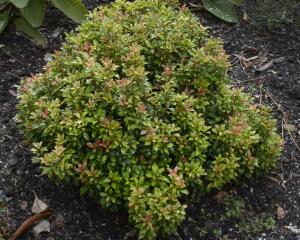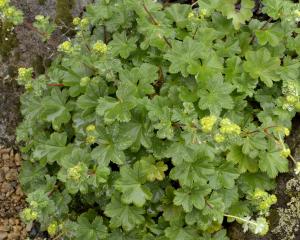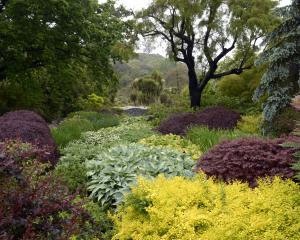My other grandmother grew the most deliciously scented sweet peas, and her green peas were delectable eaten straight from the pod on a warm summer day.
The pea family is well-represented throughout the plant world in food crops, in weeds and in beautiful ornamental plants, several of which are blooming now in the rock garden at Dunedin Botanic Garden.
Spanish gorse, Genista hispanica, is much more affable than our weedy gorse, Ulex europaeus.
Just as prickly, it forms 90cm-high compact mounds and does not appear to self-seed.
Its green stems and spines give it the appearance of being evergreen, with soft new growth and bright yellow flowers appearing in spring.
Hedgehog broom lives up to its name.
Erinacea anthyllis has spiny, unforgiving branchlets and forms a neat dome about 30cm high.
The violet-blue petals emerge from a white inflated calyx, fading to steel grey as they age.
Sweet pea, Lathyrus odoratus, has many smaller relations including the following: Lathyrus laxiflorus is a prostrate perennial with trailing stems of greyish-green foliage, tinged with red.
This sets off the pink and purple flowers beautifully.
The upright Lathyrus vernus disappears during winter to emerge in early spring with fresh green foliage and purple flowers reaching 40cm tall.
This is a small introduction to the pea family.
How many others can you find at the botanic garden?
-Robyn Abernethy is the Rock, Water and Alpine Collection Curator at Dunedin Botanic Garden.

